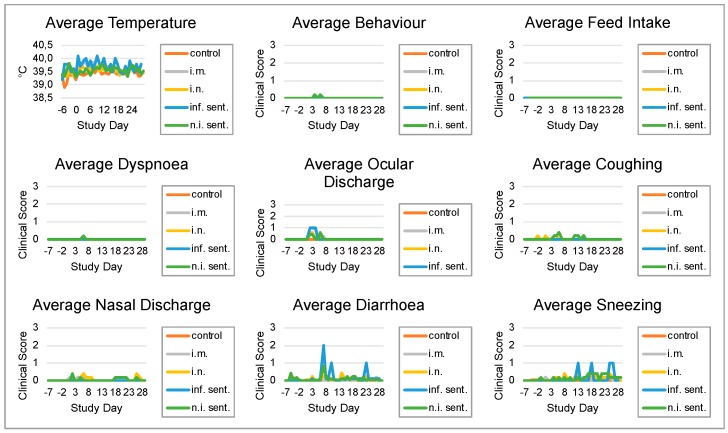Figure 1.
Pathogenicity of lateral-shaking inducing neuro-degenerative agent (LINDA) in immunocompetent piglets. A total of 21 piglets were divided in five groups: five negative control, five intramuscularly (i.m.) infected and five intranasally (i.n.) infected animals as well as three sentinel animals for the i.m. and three sentinel animals for the i.n. group. The animals from the i.m. and i.n. infection groups were inoculated with LINDA (1 × 107 TCID50/mL) on study day 0. Body temperature, behavior, feed intake, dyspnea, ocular discharge, coughing, nasal discharge, diarrhea and sneezing were assessed daily and symptoms were classified by a scoring system with scores from 0 (physiological) to 3 (severe clinical symptoms). The mean of gathered parameters was calculated for the control, i.m. infected, i.n. infected, infected sentinel (inf. sent.) and non-infected sentinel (n.i. sent.) animals. No severe LINDA virus associated clinical signs were observed comparing infected and non-infected animals. However, mild fever and other signs of disease were seen in some infected animals, such as the infected sentinel animal within the i.m. group.

